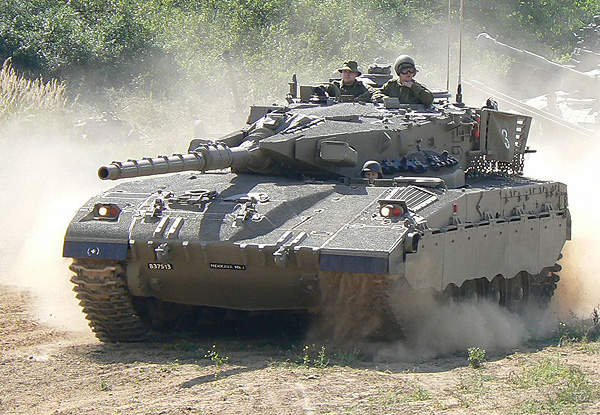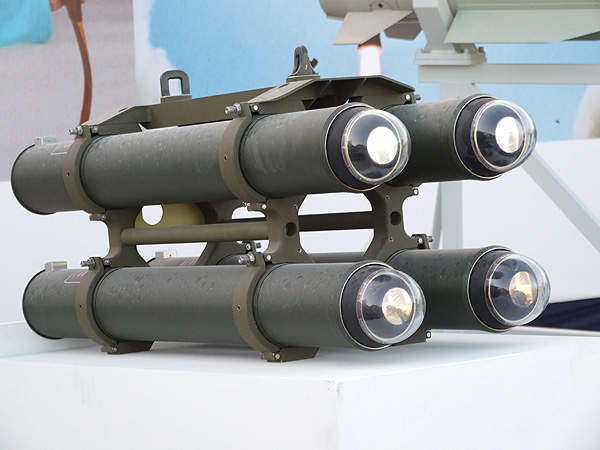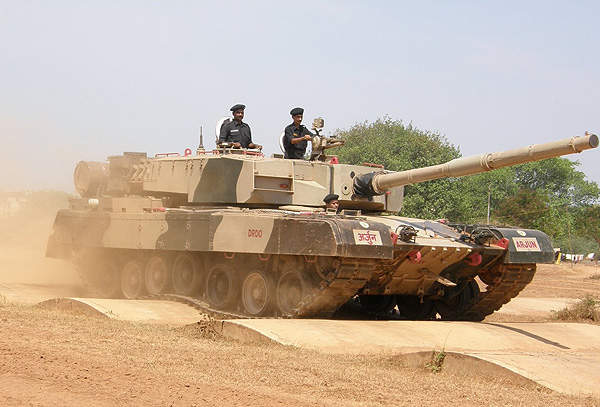
LAser Homing Attack Missile, or LAHAT, is an advanced missile developed and manufactured by the MBT Division of Israel Aerospace Industries (IAI). It is a light weight missile suitable for precision attack missions.
The gun or canister launched missile can be fired from a range of platforms such as armoured vehicles, tanks and helicopters. The missile is effectively used in urban areas requiring a low collateral damage solution. It can hit both stationed and moving targets while avoiding the air defence of hostile forces.
LAHAT laser homing attack missile design
Primarily designed for 105mm and 120mm guns of the Merkava tanks, LAHAT is also suitable for all types of 105mm and 120mm guns, including low recoil guns and low-weight guns of armoured vehicles.
LAHAT has a length of 975mm, diameter of 104.5mm and a weight of 12.5kg. A LAHAT launcher equipped with four missiles weighs less than 80kg. The compact dimensions of the missile allow easy integration on light-weight helicopters, light vehicles and armoured fighting vehicles (AFVs).
Conventional tanks require minimal modifications to install the LAHAT system. The laser range-finder is replaced with LRF / laser designator module. LAHAT programming is configured in the fire control computer. The missile is stowed like other rounds in the ammunition rack and handled just like any other type of ammunition.
Development and tests of LAser Homing Attack Missiles
The development of LAHAT began in the mid-1990s. IAI conducted airborne testing to integrate the missile on attack and transport helicopters. In October 1998, LAHAT was unveiled for the first time at the Association of the US Army (AUSA).
IAI demonstrated a new air-launched variant of the LAHAT, known as the SkyBow, at the 2004 Asian Aerospace exhibition held in Singapore. The missile variant was successfully test fired from Mi-8/Mi-17 and MD-500/MD-530 helicopters in 2005.
IAI completed a series of test firings of LAHAT on the Arjun tank of the Indian Army in 2005. The missile system was also demonstrated to Chile. India’s Hindustan Aeronautics Limited (HAL) displayed its Dhruv advanced light helicopter (ALH) armed with a four-round LAHAT launcher at 2005 Paris Air Show.
The missile was also offered as a part of proposed Gazelle SA 342 helicopter upgrade package. A LAHAT four-round launcher fitted to the Gazelle was demonstrated at the 2010 Eurosatory defence exhibition.
In 2010, two LAHAT missiles were successfully test fired from a Bell AH-1 Cobra helicopter of the Israel Air Force (IAF).
IAI unveiled a naval variation of the LAHAT at IMDEX Asia in May 2011. The company has teamed up with General Dynamics Armament and Technical Products, Thiokol Propulsion and General Dynamics Ordnance and Tactical Systems for the US market.
Operations involving Israel’s advanced missile system
Launching of LAHAT requires minimal exposure in the firing position. The commander’s sight is provided with LRF / laser designator to maintain line of sight to the target during the flight of the missile.
The detection of firing position is very difficult due to low launch signature of the missile. The trajectory can be set to match either top attack or direct attack engagements.
A vehicle can launch LAHAT from hidden position or use remote designation for better protection. The missile strikes the target with an accuracy of 0.7m. It is effective against ships, ground targets and helicopters within the range of six kilometres.
Guidance system and warhead characteristics of the Israeli LAHAT
LAHAT has a semi-active laser guidance system using direct and indirect laser designation.
The missile uses launching platforms or other platforms such as a helicopter, unmanned aerial vehicle (UAV) or a forward observer to designate the target.
The missile uses a tandem warhead which is capable of defeating all types of modern armour, including add-on reactive armour. High penetration capability of the main warhead allows the missile to penetrate the armour of major armoured vehicles at high impact angles.
The Global Missiles and Missile Defence Systems Market 2011-2021
This project forms part of our recent analysis and forecasts of the global missiles and missile defence systems market available from our business information platform Strategic Defence Intelligence. For more information click here or contact us: EMEA: +44 20 7936 6783; Americas: +1 415 439 4914; Asia Pacific: +61 2 9947 9709 or via email.







